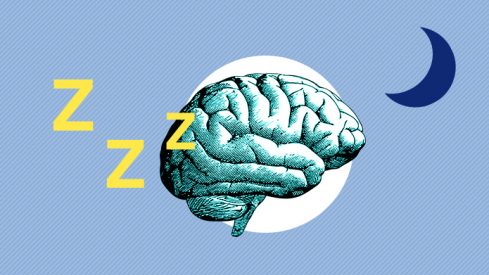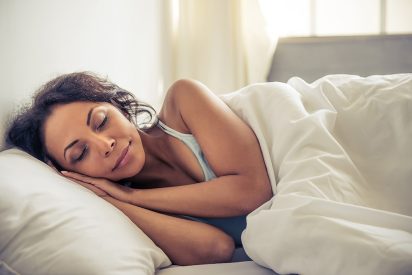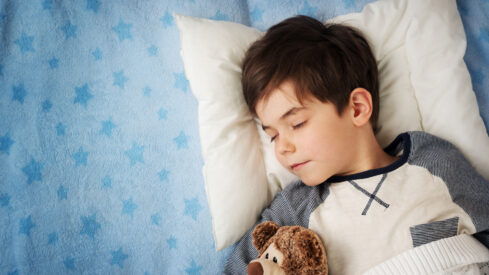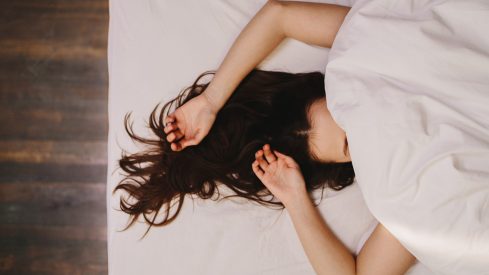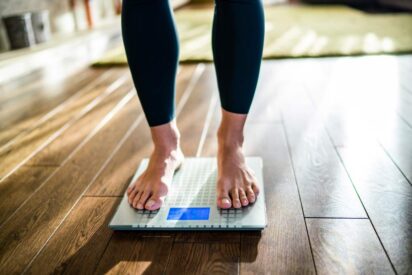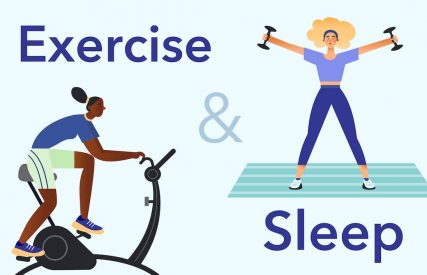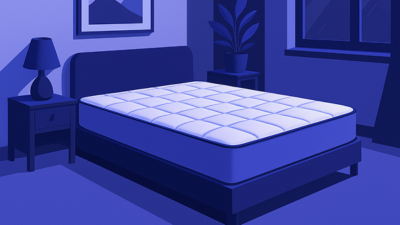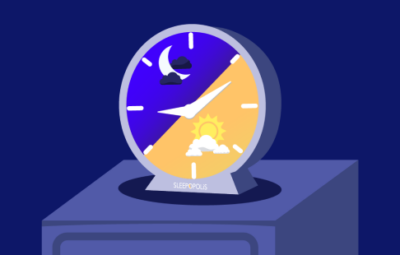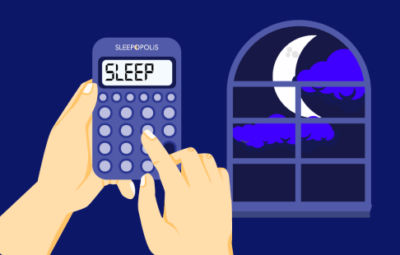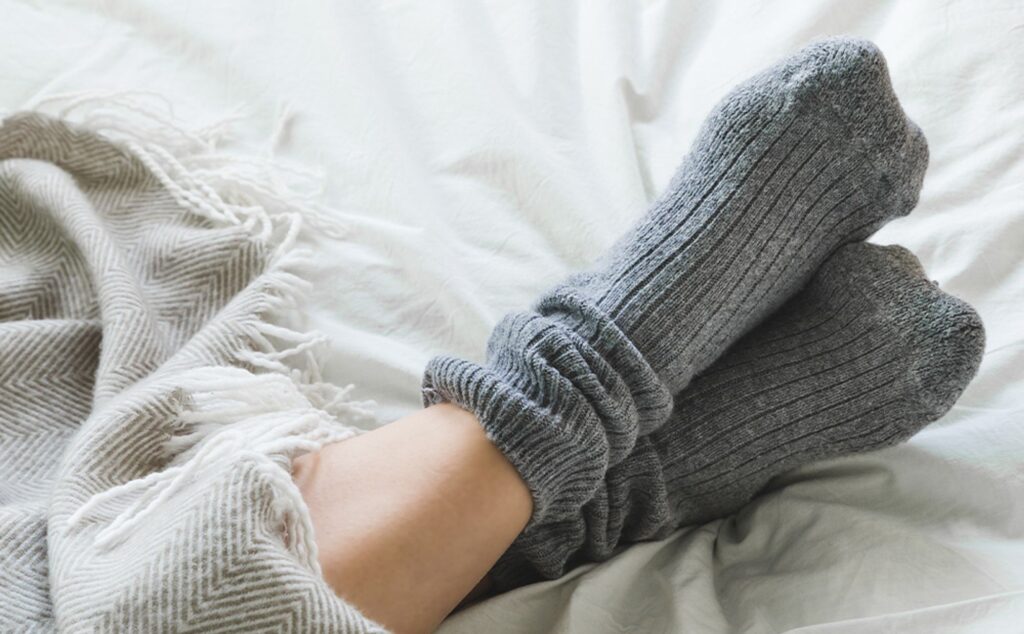
Have you ever tried to sleep on a hot summer night with no air conditioning? Or huddled under a too-thin blanket in the middle of winter? Our bodies work hard to keep us at the right temperature using a process called thermoregulation, and how well your body can keep your temperature just right can have a big impact on your sleep quality. We’ll get into the nitty gritty of how regulating body temperature works and let you know how you can optimize your sleeping temperatures for excellent slumber.
Note: The content on Sleepopolis is meant to be informative in nature, but shouldn’t be taken as medical advice or take the place of medical advice from a trained professional. If you feel you may be suffering from any sleep disorder or medical condition, please see a healthcare provider.
Long Story Short
- Thermoregulation keeps your core temperature between 97.7 and 99.5 degrees Fahrenheit, which offers the best environment for your body to function at max capacity.
- Your body temperature peaks in the afternoon and gets the lowest in the hour or two before you wake up, which works in tandem with your internal clock, or circadian rhythm, to get the best sleep.
- A good goal for sleeping temperature is about 66 to 70 degrees Fahrenheit, but you can experiment to find what works best for your environment and sleeping preferences, like bedding and PJs.
- If you sleep hot or cold, you can try different bedding, mattresses, pajamas, and pre-sleep routines to keep your temperature even through the night.
What Is Thermoregulation?
Before you can understand how thermoregulation helps you sleep, you first need to know what on earth it is. The process of thermoregulation keeps your core temperature between 97.7 to 99.5 degrees Fahrenheit, which offers the best environment for your body to function at max capacity. (1)
Throughout the day, you sense the temperature of both your body and environment. Receptors in your skin and organs send regular updates to a part of your brain called the hypothalamus, which helps control body temperature and sleep. (2) When you get too hot or cold, your hypothalamus gives orders to fix the imbalance by shivering, sweating, or other temperature-changing actions. (1) (3)
Your body temp maxes out in the early evening a few hours before you fall asleep and reaches its lowest point one to two hours before you wake up, says Dr. Robert Oexman, MD. These temperature fluctuations closely relate to your circadian rhythm, or internal clock, which also plays a big role in how well you sleep. (4) Speaking of sleep… let’s dig into how your body temp acts while you snooze.
What Happens to Your Body Temperature During Sleep?
As bedtime approaches, your body starts to “close up shop” for the night. A few hours before you normally fall asleep, your core body temperature starts to dip. (3) This downward trend in temperature is steepest as you drift into NREM (non-rapid eye movement) sleep, says Oexman, but your temp still continues to fall gradually through the night until you approach wake-up time.
If your body wants it cool when we sleep, why do we like to snuggle up under warm covers at bedtime? This phenomenon is known as the “warm bath effect.” When you warm up for 10 minutes to two hours before sleeping (we know — it’s quite the range!), you may find you can fall asleep faster at bedtime. (3) (5)
Whether with a shower, bath, or snuggling your boo under a cozy comforter, giving your temp a little boost before bed widens (dilates) blood vessels in your skin, which then causes a steep drop in core body temperature, says Oexman, making it easier to fall asleep.
Your body temperature continues to drop during all sleep stages, although not dramatically. (4) (6) When you get to REM (rapid-eye movement) sleep, your body doesn’t regulate temperature as well, says Oexman, which is why you may wake up in the early morning hours wanting to throw off your covers.
Why Do I Get So Hot When I Sleep?
In a perfect world, our bodies would shift our temperature exactly right all the time, but sometimes illness and other factors keep us from our best thermoregulation.
Health Conditions
Quite a few health issues can disrupt your temperature controls, but you have options when it comes to treatments. If you think you may have a condition listed below, let your healthcare provider know and they can help you make a plan to get your thermoregulation back on track.
- Chronic Illness: Cardiovascular disease and depression can mess with your temperature regulation, especially when you have both. (7)
- Central nervous system (CNS) disorders: Disorders of the brain that affect movement like multiple sclerosis and Parkinson’s disease often cause issues with regulating body temperature throughout the day and night. (1)
- Hyperthyroidism: When your thyroid (a small gland in your neck) overproduces its hormones, your body uses energy differently, which can affect your core temperature. (1)
- Fever: Infections can ratchet up your body temp because of inflammation (from immune cells meant to destroy the virus or bacteria). (1)
- Hot Flashes: This extra-fun symptom of menopause can cause unexpected and erratic jumps in body temperature during the day or night. (1) (8)
Lifestyle Factors
Some temperature-disruptors are outside of your control, but others can be banished through some lifestyle adjustments. Some are simple, others a bit more complex, but these may help you find ways to set yourself up for thermoregulation success.
- Alcohol or drug use: Alcohol can influence your temperature by widening your blood vessels or affecting your nervous system, and stimulant drugs and opioids can make you more sensitive to a higher room temperature while you sleep. (9) (10)
- Bedroom temperature: A too hot or cold room can keep your body from regulating its core temperature while you sleep, says Oexman.
- Exercise: Exercising a few hours before bed can actually help you sleep by increasing your core body temp, allowing for a natural sleep-inducing decrease at bedtime, says Oexman. However, high-intensity exercise right before bed may interfere with your snoozing. (11)
- Stress: Stress can impact your body in lots of unwelcome ways, including a higher core temperature. (12)
If you’re stressed, you can try deep breathing exercises, meditation, or calming yoga before bed. For a medical issue, your doctor can help you keep your temperature regulated. For everything else, we’ve got some tips coming up!
The Ideal Sleep Temperature
If bedroom temperature is so important, you may wonder how to set your thermostat at night. A good range for your bedroom temperature is between 66 and 70 degrees Fahrenheit, says Oexman. However, he says not everyone can hit that goal, and that’s okay.
“I always tell patients the cooler the better,” Oexman says. “[But] I think it’s better to be consistent. Let your body know what sleep looks like.”
Oexman tells his patients to get “thermal neutral,” which means you don’t sweat or shiver while you sleep. Everyone’s preferences may differ a little, depending on what kinds of covers and sleepwear you like, so you may need to try out a few different combinations to find your sweet spot.
Why Hot Temperatures Can Make It Hard To Sleep
Anyone who has woken up feeling sticky and sweaty likely knows hot temperatures (above 78.8°F) can disrupt your zzzs. (13) We lose heat by sweating, through exposed skin, and even by breathing. But in a warm environment, our bodies can’t keep us cool because we just can’t get rid of heat fast enough, says Oexman.
An overly-warm bedroom can make it hard to fall asleep, prevent you from getting enough deep sleep, and may cause wake ups during the night. (13) High temperatures throughout the day can lower your appetite, which can also affect thermoregulation. (13) Let’s talk about what cold temps do to your sleep and then we can dig into some solutions.
How Cold Temperatures Affect Sleep
As we’ve discussed above, temperatures that are on the cooler side make for some top-notch sleep. (13) Sleeping in a cooler environment can earn you more REM and slow-wave sleep, which improves learning, memory, and immune function. (7) (14) (15)
It may be possible to get too cold while you sleep, but that benchmark varies from person to person. One study found people who felt their bedrooms were too cold had worse sleep quality than those who felt like their bedroom temps were comfortable. (16) All that to say, you can test out different options to find the right temperature range for your best sleep.
Sleep Strategies for Hot Sleepers
Do you wake up hot at night? Maybe your bedroom floor is littered with discarded sleep clothes by morning…and not in a fun way. If you sleep hot, you can try some of these tips to stay cool and get better sleep:
- Natural fabrics: Try different pajama fabrics — cotton breathes better than silk or polyester.
- Cool down your bedding: Invest in cooling sheets, mattress, pillows, and bedding.
- Try warming up first: Take a warm shower or bath before bed.
- Turn on a fan: More air circulation = less overheating.
- Change your room temp: Lower the heat or turn up the air conditioning.
- Block sunlight: Keep your bedroom curtains closed during the day to keep out the sun’s heat.
- Keep exercise chill: Avoid high-intensity exercise close to bedtime.
If you sleep with a partner, a bigger mattress can help you keep your body heat separate throughout the night. But you can still enjoy those pre-sleep snuggles!
Sleep Strategies for Cold Sleepers
Cold sleepers may wake up at night covered in goosebumps and shivering. You can warm up your snoozing with these tips:
- Turn up the heat: But only a little — if you wake up sweaty, try a lower setting.
- Layer up: Sleep in and under layers so you can add and remove them through the night. Keep a blanket or three at the end of your bed for midnight chills.
- Try sleeping with socks: If your fuzzy lounge socks are too hot, you can try a thinner crew sock.
- Get a warmer comforter: Most comforters come in different weights and warmth ratings.
- Warm your bedding: Try out a heated mattress pad or blanket.
Hot Sleepers and Cold Sleepers Love to Live with Each Other, Don’t They?
If you and your sleeping partner fight over sleeping conditions, you could try the Scandinavian sleep method, which involves each couple having their own top sheet and blanket or duvet. Oexman often recommends this method to his patients and says it makes a big difference for bed partners.
The Last Word From Sleepopolis
Thermoregulation and your circadian rhythm are part of a complex dance that results in good or bad sleep. The more you can do to keep your body temperature on an even keel throughout the night, the better your sleep should be. If you try the ideas above and still wake up often — sweaty or shivering — you can always consult your healthcare provider for more fine-tuned advice.
FAQs
How does sweating help thermoregulation?
When you sweat, the moisture on your skin cools, which wicks heat away from your body. If your core temperature rises too high, your brain starts the sweat factory to cool you off. (1)
Why do I get so hot at night?
You may get hot at night for a wide range of reasons. Silk and polyester pajamas and some bedding can trap heat. Your bedroom may need cooling down with a thermostat change or a fan for air circulation. Try out some different bedroom changes and see if they can help you cool off.
Sources
- Osilla EV, Marsidi JL, Shumway KR, Sharma S. Physiology, Temperature Regulation. In: StatPearls. StatPearls Publishing; 2023. Accessed December 31, 2023. http://www.ncbi.nlm.nih.gov/books/NBK507838/
- Hypothalamus: MedlinePlus Medical Encyclopedia. Accessed January 3, 2024. https://medlineplus.gov/ency/article/002380.htm
- Rothhaas R, Chung S. Role of the Preoptic Area in Sleep and Thermoregulation. Frontiers in Neuroscience. 2021;15. Accessed January 4, 2024. https://www.frontiersin.org/articles/10.3389/fnins.2021.664781
- Geneva II, Javaid W. Disruption of the Body Temperature Circadian Rhythm in Hospitalized Patients. The American Journal of the Medical Sciences. 2021;362(6):578-585. doi:10.1016/j.amjms.2021.06.021
- Harding EC, Franks NP, Wisden W. Sleep and thermoregulation. Current Opinion in Physiology. 2020;15:7-13. doi:10.1016/j.cophys.2019.11.008
- Harding EC, Franks NP, Wisden W. The Temperature Dependence of Sleep. Frontiers in Neuroscience. 2019;13. Accessed December 10, 2023. https://www.frontiersin.org/articles/10.3389/fnins.2019.00336
- Irwin MR. Sleep disruption induces activation of inflammation and heightens risk for infectious disease: Role of impairments in thermoregulation and elevated ambient temperature. Temperature. 2023;10(2):198-234. doi:10.1080/23328940.2022.2109932
- Hot Flashes: What Can I Do? | National Institute on Aging. Accessed January 3, 2024. https://www.nia.nih.gov/health/menopause/hot-flashes-what-can-i-do
- Kwon R, Chang Y, Kim Y, et al. Alcohol Consumption Patterns and Risk of Early-Onset Vasomotor Symptoms in Premenopausal Women. Nutrients. 2022;14(11):2276. doi:10.3390/nu14112276
- Chang HH, Zhang H, Latimore AD, et al. Associations between short-term ambient temperature exposure and emergency department visits for amphetamine, cocaine, and opioid use in California from 2005 to 2019. Environment International. 2023;181:108233. doi:10.1016/j.envint.2023.108233
- Frimpong E, Mograss M, Zvionow T, Dang-Vu TT. The effects of evening high-intensity exercise on sleep in healthy adults: A systematic review and meta-analysis. Sleep Medicine Reviews. 2021;60:101535. doi:10.1016/j.smrv.2021.101535
- Nakamura K, Morrison SF. Central sympathetic network for thermoregulatory responses to psychological stress. Autonomic Neuroscience: Basic and Clinical. 2022;237. doi:10.1016/j.autneu.2021.102918
- Zheng G, Li K, Wang Y. The Effects of High-Temperature Weather on Human Sleep Quality and Appetite. International Journal of Environmental Research and Public Health. 2019;16(2):270. doi:10.3390/ijerph16020270
- Physiology, Sleep Stages – StatPearls – NCBI Bookshelf. Accessed October 14, 2023. https://www.ncbi.nlm.nih.gov/books/NBK526132/
- Reddy OC, van der Werf YD. The Sleeping Brain: Harnessing the Power of the Glymphatic System through Lifestyle Choices. Brain Sciences. 2020;10(11):868. doi:10.3390/brainsci10110868
- Chimed-Ochir O, Ando S, Murakami S, et al. Perception of feeling cold in the bedroom and sleep quality. Nagoya J Med Sci. 2021;83(4):705-714. doi:10.18999/nagjms.83.4.705
- Oexman, Robert, MD. Personal Interview. January 3, 2024.
